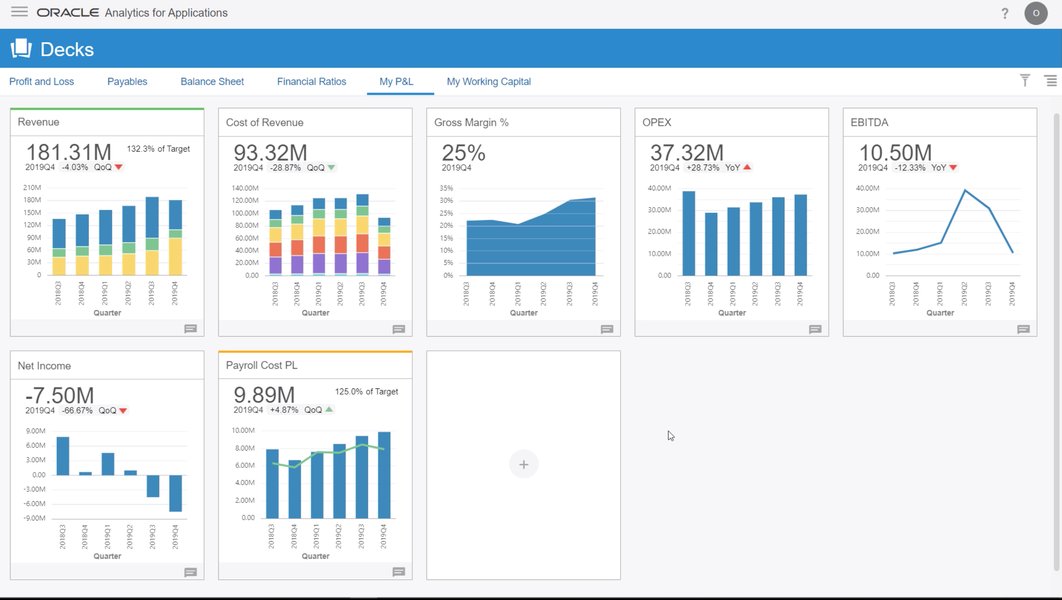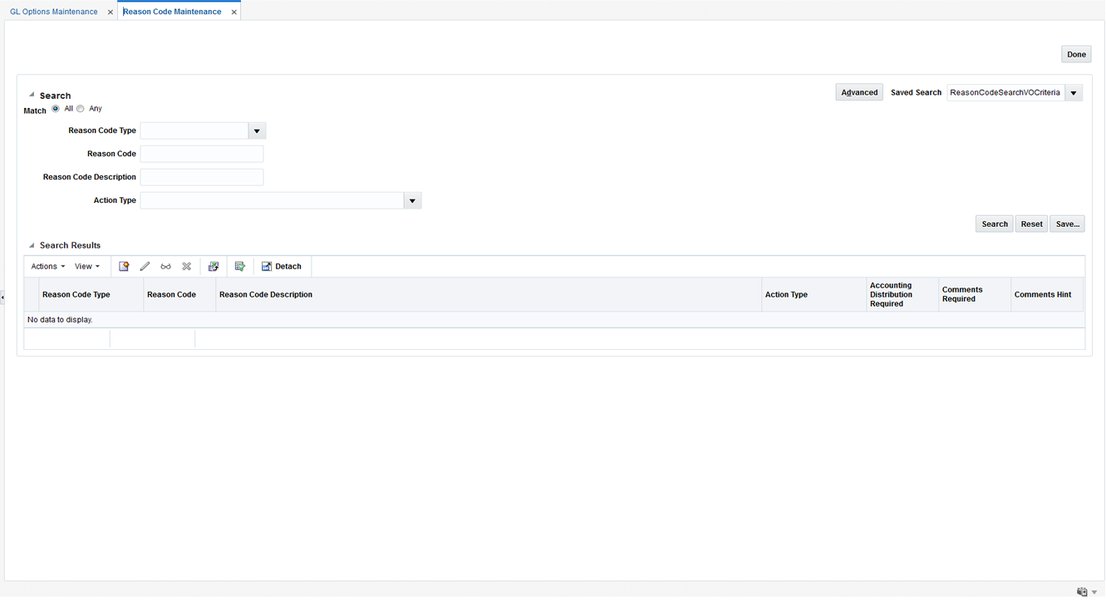
Unlocking the "Why": Mastering Action Reasons in Oracle HCM
Your comprehensive guide to understanding, utilizing, and customizing Action Reasons in Oracle Human Capital Management.
In the intricate world of Oracle Human Capital Management (HCM), "Actions" and "Action Reasons" are fundamental concepts for tracking and managing the employee lifecycle. While an Action defines *what* change is occurring (e.g., hire, promotion, termination), the Action Reason provides the crucial *why* behind that change. This distinction is vital for data accuracy, reporting, compliance, and insightful analytics. Understanding how Action Reasons function, where they appear, and how they can be tailored to your organization's needs is key to leveraging Oracle HCM effectively.
Key Insights: Action Reasons at a Glance
- Optional by Default, Configurable to Mandatory: Oracle HCM generally treats Action Reasons as optional fields. However, organizations can configure the system to make them mandatory for specific actions or transactions to ensure comprehensive data capture.
- Prominent in Workforce Change Quick Actions: Action Reasons are typically encountered by users in Quick Actions related to significant employee lifecycle events such as hiring, termination, job changes, salary adjustments, transfers, and promotions.
- Highly Customizable: Oracle HCM provides robust tools for customizing the Action Reason field, including making it mandatory, defining lists of valid reasons, and tailoring its behavior through personalization, configuration, and business rules.
The Nature of Action Reasons: Mandatory or Optional?
Understanding Default Behavior and Customization Potential
By default, Oracle Fusion HCM designates the "Action Reason" field as optional when an Action is initiated. This means users can often complete an HR transaction, such as a new hire or a job change, without specifying a reason for the action. The primary purpose of Action Reasons, in their default state, is to provide supplementary information for analysis and reporting. For instance, while the "Termination" action indicates an employee is leaving, the Action Reason could specify "Voluntary Resignation," "Retirement," or "Involuntary Dismissal," offering deeper context.
However, the flexibility of Oracle HCM allows organizations to override this default behavior. It is a common requirement to make Action Reasons mandatory to:
- Ensure data completeness and consistency.
- Meet compliance and audit requirements.
- Enable more granular reporting and analytics on workforce trends.
- Support specific business processes that require justification for actions.
The system can be configured so that for certain Actions (e.g., Termination, Salary Change) or within specific modules (e.g., Oracle Fusion Workforce Compensation), providing an Action Reason becomes a prerequisite for completing the transaction. This is typically achieved through personalization layers or specific setup tasks within the application, rather than being a global "on/off" switch.

A typical view of an Oracle HCM Cloud interface, where actions on employee records are managed.
Action Reasons in Action: Where Do Users Encounter Them?
Identifying Quick Actions with Action Reason Fields
Quick Actions in Oracle HCM are designed as shortcuts, accessible typically from the Home page, allowing users (employees, managers, and HR specialists) to perform common tasks efficiently. The Action Reason field appears predominantly in Quick Actions that involve changes to an employee's employment record or status. These are often grouped under tabs such as "Me" (for self-service actions), "My Team" (for manager-initiated actions), and "My Client Groups" (for HR administrators managing broader populations).
Common Quick Actions Featuring Action Reasons:
While the exact list can vary based on system configuration and user roles, the Action Reason field is commonly part of the user input process in the following types of Quick Actions:
- Hiring Processes: When initiating a "Hire an Employee" or "Add Pending Worker" action.
- Employment Termination: For "Terminate Employee" actions, specifying the reason is often critical.
- Job Changes: Actions like "Change Job," "Promotion," "Transfer," or "Change Assignment" frequently include an Action Reason.
- Compensation Adjustments: "Change Salary" or other compensation-related actions often require a justification.
- Location Changes: "Change Location" may also prompt for an Action Reason.
- Work Relationship Changes: Actions affecting the primary work relationship or assignments.
For example, when a manager uses the "Promote Employee" Quick Action under "My Team," they will select the "Promotion" Action and then may be presented with a list of Action Reasons (e.g., "Merit Increase," "Increased Responsibilities," "Career Progression Plan") to choose from. If configured as mandatory, the transaction cannot proceed without this selection.
Visualizing Action Reason Integration
The mindmap below illustrates the central role of Action Reasons, connecting them to core HR Actions, their appearance in various Quick Actions, and the overarching customization possibilities within Oracle HCM.
Tailoring to Your Needs: Customizing the Action Reason Field
Methods and Tools for Configuration
Oracle HCM offers several avenues for customizing the Action Reason field to align with specific organizational requirements. These customizations range from making the field mandatory to defining specific lists of reasons for particular actions or contexts.
1. Page Personalization
One of the most direct ways to make the Action Reason field mandatory is through page personalization. Using tools like the Personalization editor (formerly Page Composer in some contexts), administrators can modify the properties of the Action Reason field on specific pages (e.g., Hire, Change Job, Terminate Employee). This allows setting the 'Required' property to true, often conditionally using Expression Language (EL) if the requirement depends on other factors like the selected Action or user role.
2. Setup and Maintenance Tasks
The "Setup and Maintenance" work area is central to configuring Actions and Action Reasons:
- Manage Actions: This task allows defining and managing the Actions themselves (e.g., HIRE, PROMOTION, TERMINATION). You can associate specific sets of Action Reasons with each Action.
- Manage Action Reasons: Here, you create, edit, or deactivate individual Action Reasons. You can define the codes, descriptions, and associate them with specific Actions. This ensures that users are presented with a relevant list of reasons based on the Action they are performing. While this task itself doesn't make the field mandatory, it's crucial for populating the list of available reasons. You can also end-date reasons that are no longer applicable.

An example of a configuration interface for managing reason codes, similar to what's found in Oracle HCM's "Manage Action Reasons" task.
3. Business Rules and Validation Rules
For more complex logic, Oracle HCM supports the creation of business rules or validation rules. These can be configured, for example, using the Application Composer or other rule engines, to enforce that an Action Reason is provided based on a combination of conditions (e.g., for a specific legal employer, business unit, or if a salary change exceeds a certain percentage). These rules can trigger error messages or prevent transaction submission if the criteria are not met.
4. Descriptive Flexfields (DFFs)
In some cases, Descriptive Flexfields can be used in conjunction with Actions and Action Reasons to capture additional, structured information. While not directly making the Action Reason field mandatory, DFFs can be configured to become mandatory based on the selected Action or Action Reason, extending the data capture capabilities.
5. HCM Data Loader (HDL)
For bulk updates or managing the association of Action Reasons to Actions on a large scale, HCM Data Loader can be utilized. This is useful for initial setup, migrations, or large-scale modifications to the Action Reason framework.
6. Configure Quick Actions
Administrators can also configure Quick Actions themselves via the "Navigation Configuration" page (or similar tools for Redwood experience pages). This includes controlling visibility, naming, and potentially influencing the behavior of fields within the Quick Action flow, although direct "make mandatory" settings for Action Reason here are usually tied to the underlying page personalizations or business object configurations.
Comparative Analysis of Customization Approaches
Different customization methods offer varying levels of flexibility, complexity, and impact. The radar chart below provides an opinionated comparison of common approaches for tailoring Action Reasons in Oracle HCM, considering factors like technical skill required, time investment, control granularity, and potential impact during system upgrades.
This chart represents a qualitative assessment. Scores are on a 1-10 scale, where higher means more of that characteristic (e.g., higher Technical Skill Req. means more skill is needed).
Summary of Quick Actions and Action Reasons
Common Scenarios for User Input
The following table summarizes common Quick Actions where the Action Reason field is typically available for user input, along with illustrative use cases. The "Mandatory Potential" column indicates whether organizations commonly configure these to require an Action Reason.
| Quick Action Category | Specific Quick Action Example | Action Reason Field Presence | Mandatory Potential | Typical Use Case for Action Reason |
|---|---|---|---|---|
| Hiring & Onboarding | Hire an Employee | Yes | High | New Position, Replacement, Expansion |
| Employment Changes | Change Job | Yes | Medium to High | Promotion, Lateral Move, Restructure |
| Employment Changes | Transfer | Yes | Medium | Department Change, Location Change, Business Unit Realignment |
| Compensation | Change Salary | Yes | High | Merit Increase, Market Adjustment, Promotion Related |
| Separations | Terminate Employee | Yes | Very High | Voluntary Resignation, Involuntary - Performance, Retirement, Layoff |
| Assignment Management | Change Assignment | Yes | Medium | Change in Working Hours, FTE Change, Assignment Category Change |
| Workforce Structures | Manage Action Reasons (Admin) | N/A (Configuration Task) | N/A | Defining and associating reasons with actions |
Deep Dive: Actions and Action Reasons Explained
Understanding the Core Concepts in Oracle HCM
To further clarify the roles of Actions and Action Reasons, the following video provides a detailed tutorial on these concepts within the Oracle Fusion HCM environment. It explains their significance in managing employee data and how they are structured within the system.
This video provides a tutorial on Oracle HCM Actions & Action Reasons.
Actions represent significant events or changes in an employee's lifecycle. They are predefined categories that trigger specific system behaviors, workflows, or reporting outputs. Action Reasons add a layer of granularity by explaining the specific cause or justification for that Action. For example, the Action "HIRE" could have Action Reasons like "NEW_HIRE_GROWTH", "HIRE_REPLACEMENT", or "HIRE_PROJECT". This structured approach is crucial for maintaining data integrity, facilitating accurate reporting, and enabling detailed workforce analytics.
Frequently Asked Questions (FAQ)
Recommended Further Exploration
Delve Deeper into Oracle HCM Capabilities
- How can I use Expression Language (EL) for advanced personalization in Oracle HCM Quick Actions?
- What are the best practices for managing and auditing Actions and Action Reasons in Oracle Fusion HCM for compliance?
- How do Action Reasons impact downstream processes and reporting in Oracle HCM Analytics?
- Can I create approval workflows in Oracle HCM based on specific Action Reasons selected by a user?
References
Last updated May 6, 2025